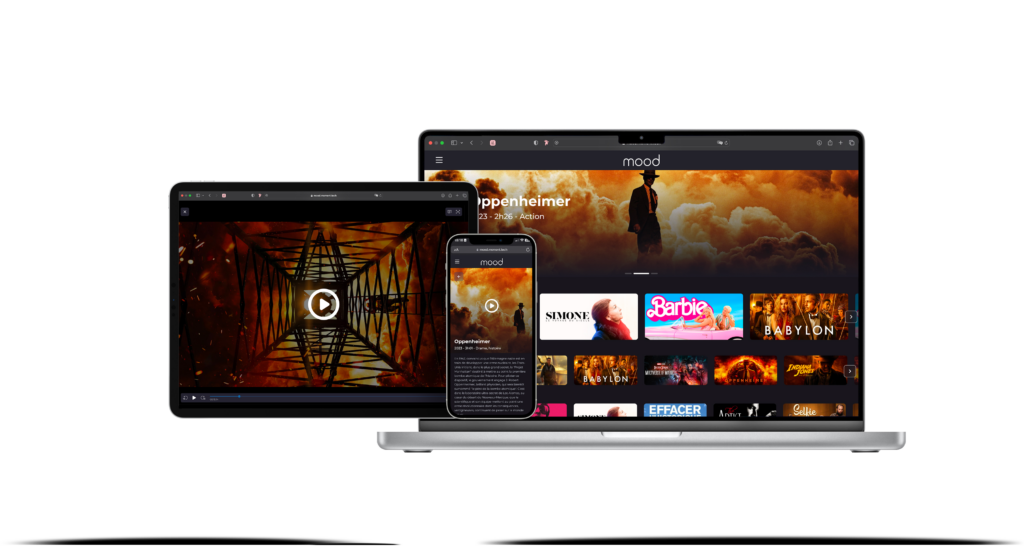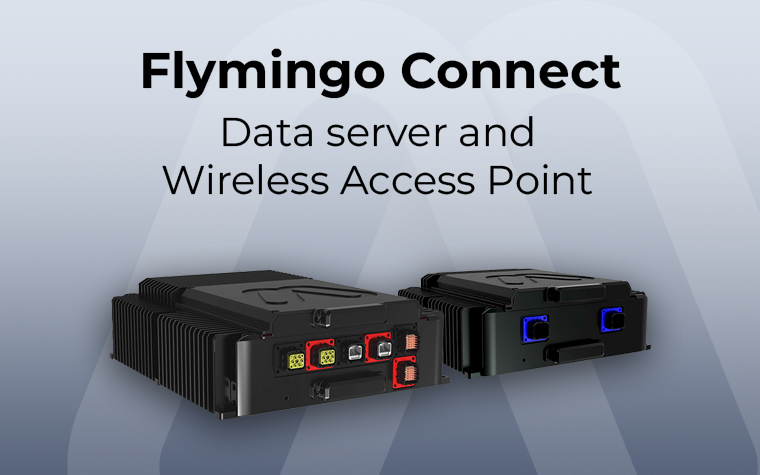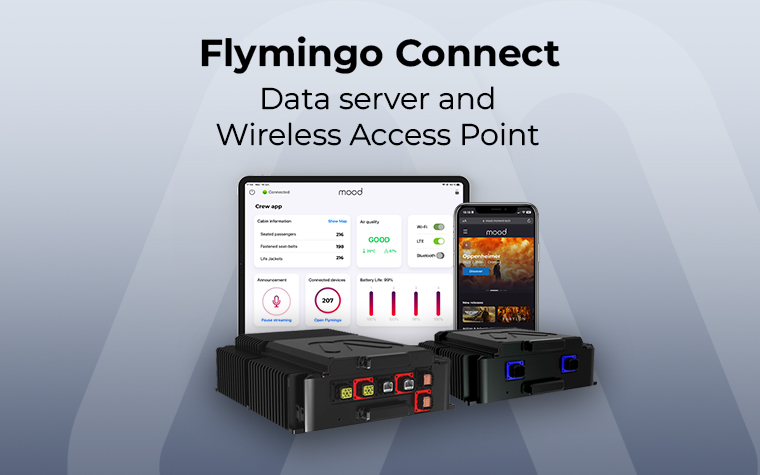
Moment is a technology company that builds advanced IFEC systems for the aviation industry. They empower carriers with innovative on-board services ranging from wireless entertainment to onboard e-commerce, connectivity and IoT platforms. AIX sat down with Tanguy Morel, CEO of Moment to discuss emergent inflight entertainment and connectivity trends, embedded solutions and more.
How have airlines’ IFEC offerings changed in the past 5 to 10 years’?
Onboard connectivity
We’re witnessing a significant trend towards airlines offering internet connectivity on board. While various models are being tested, there’s a notable shift towards providing free access, with limited data, to passengers. This aligns with the increasing demand from travellers for seamless connectivity during their flights.
Use of personal devices/development of wireless IFE solutions
From the mid-2010s onward, there were notable advancements in wireless connectivity and streaming technologies. These developments enabled airlines to provide entertainment content directly to passengers’ personal devices, eliminating the necessity for wired connections or seat-back screens.
Consequently, this innovation extended the ability to offer entertainment and other onboard services to smaller aircraft such as single-aisle aircraft or regional jets without incurring prohibitive costs.

Onboard digitalisation
E-commerce
Airlines are digitising onboard retail experiences, including duty-free shopping, food and beverage ordering, and ancillary service purchases. Passengers can browse and purchase products through the in-flight entertainment system, making transactions more convenient and efficient.
Crew efficiency
Digital tools, platforms and IoT sensors are streamlining crew operations, including communication, task management, and performance monitoring. Mobile apps, electronic flight bags (EFBs), and wearable devices enable crew members to access real-time information, communicate effectively, and collaborate efficiently to deliver exceptional service and ensure operational safety.
How are IFEC technologies keeping up with changing passenger expectations?
Passengers today have elevated their expectations for the in-flight experience, desiring a level of connectivity and entertainment akin to what they enjoy on the ground. This shift is driven by several factors:
High-speed connectivity
Passengers now anticipate seamless internet access while in the air, comparable to their experiences on the ground. The integration of high-speed connectivity technologies, such as LEO satellite networks like Starlink, ensures that passengers can browse, stream, and stay connected during their flights without interruption.
Content variety
With the proliferation of streaming platforms like Netflix and Spotify, passengers have grown accustomed to vast libraries of entertainment content at their fingertips. In response, in-flight entertainment systems are expanding their offerings to include a diverse range of movies, TV shows, music, podcasts, games, and more, providing passengers with a wealth of options to choose from.
Use of personal devices
Passengers prefer to use their own personal devices, such as smartphones, tablets, and laptops, for entertainment purposes onboard. Airlines are adapting by offering companion apps and web portals that allow passengers to seamlessly access entertainment content on their devices, creating a familiar and personalised experience.
Personalisation
Just as they expect personalised recommendations on streaming platforms and social media, passengers now seek tailored experiences onboard aircraft. IFEC systems are leveraging data analytics and machine learning algorithms to understand passenger preferences and behaviour, offering personalised content recommendations and customised services that cater to individual tastes and interests.
How do IFEC solutions improve operational efficiencies?
IFEC systems streamline crew communication and task management through dedicated applications, interfaces and IoT sensors.
Crew members can efficiently coordinate tasks, manage passenger requests, the duty-free and F&B shop and report maintenance issues, improving workflow efficiency and responsiveness. IFEC systems incorporate IoT sensors and data analytics to monitor aircraft systems in real-time.
By analysing data and identifying potential maintenance issues before they occur, airlines can schedule proactive maintenance interventions, minimise downtime, and improve operational reliability.
…and generate new business opportunities?
IFEC systems create opportunities for airlines to generate ancillary revenue through targeted advertising, sponsored content, and onboard retail partnerships. Airlines can monetise IFEC platforms by offering premium content, exclusive promotions, and personalised shopping experiences to passengers. IFEC systems also generate valuable data on passenger preferences, behaviour, and usage patterns.

Moment Flymingo Connect
In the IFE space, we’re witnessing a significant trend towards airlines offering internet connectivity on board. While various models are being tested, there’s a notable shift towards providing free access, with limited data, to passengers. This aligns with the increasing demand from travellers for seamless connectivity during their flights.
Currently, more than a third of commercial aircraft provide passenger connectivity, with projections indicating that by 2030, this figure is anticipated to rise to 60%.
As a result, aircraft are becoming increasingly connected, collecting vast amounts of data during flights. This presents a challenge for airlines, as they need solutions to efficiently process this data. Ideally, processing this data locally onboard is preferred to avoid the costly transmission of large amounts of data to ground-based or cloud-based servers.
To fully leverage this data, there’s a growing demand for real-time onboard processing, offering benefits such as diminished latency, optimised bandwidth usage, and heightened reliability for applications and services.
In this context, Flymingo Connect emerges as the ideal solution. Its embedded edge computing capabilities allow for the processing of data onboard, reducing the need for excessive data transmission to earth.
This not only improves operational efficiency (for example with proactive/predictive maintenance) but also enhances the overall passenger experience by ensuring a more personalised experience or improved connectivity for example throughout the flight.

Flymingo Connect combines an embedded edge computing data server, double-module wireless access points, and a dedicated processor for network management wireless platform. Beyond direct passenger benefits of connectivity, entertainment and service, the innovative gateway design enables airlines to integrate the entire set of benefits from the Internet of Things.
The base Flymingo Connect supports up to 150 connections while optional modular wireless access points enable effortless scalability, catering even to high density widebodies.
Additionally, we are happy to share that Flymingo Connect has been named a finalist for the Onboard Hospitality Awards!
What are the current/upcoming trends in the IFEC industry?
The IFEC industry is poised for significant transformation driven by the emergence of high-speed connectivity technologies like Low Earth Orbit (LEO) satellite networks such as Starlink. These advancements will revolutionise the onboard experience for passengers, leading to a more connected and immersive journey.
With high-speed connectivity, passengers can expect seamless access to a plethora of entertainment options, including high-definition streaming, interactive gaming, and personalised content recommendations.
LEO satellite technology, exemplified by initiatives like Starlink, will provide faster and more reliable internet speeds, significantly enhancing the IFEC experience. Passengers will enjoy smoother streaming, faster downloads, and lower latency for real-time applications such as video calls and online gaming.
This elevated connectivity will enable airlines to offer a wide range of entertainment options, ensuring that passengers remain engaged and entertained throughout their journey.
Furthermore, the integration of IoT sensors into aircraft systems will further enhance the passenger experience. These sensors will enable airlines to gather real-time data on various aspects of the flight, including temperature, humidity, and cabin pressure. By leveraging this data, airlines can optimise the cabin environment to ensure passenger comfort and well-being.
For example, IoT sensors can automatically adjust cabin temperature and lighting based on passenger preferences, creating a more personalised and enjoyable travel experience.
Moreover, IoT sensors will also play a crucial role in improving crew and maintenance operations. By collecting data on aircraft performance and equipment health, airlines can proactively identify and address maintenance issues before they escalate. This predictive maintenance approach will minimise aircraft downtime and reduce the likelihood of in-flight disruptions, enhancing overall operational efficiency and passenger satisfaction.
What will Moment be displaying at AIX this year?
As usual we will display our Flymingo Box – our lightweight, portable and above all powerful wireless IFE solution. A single unit enables up to 100 streaming connections simultaneously – and Mood, our entertainment and onboard services platform.
We’re thrilled to announce that our latest version of our Flymingo Connect will be showcased at AIX 2024. Additionally, we’ll be introducing our latest IoT occupancy sensor, along with an updated version of our crew app, designed to efficiently gather and display relevant data for the crew’s use.
Empower your digital journey with Moment.


